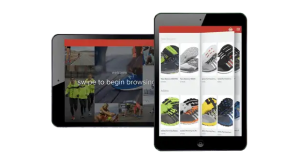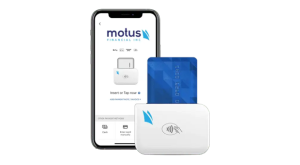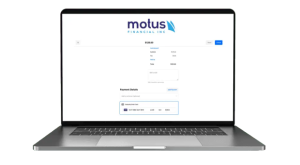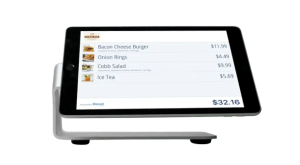Using Social Media to Increase your Restaurant Business
As a restaurant owner, you likely know how much of an impact social media can have on your restaurant’s traffic. Although it can be overwhelming to keep up with the ever-changing landscape of social media, the hard work can reward you with increased restaurant traffic.
One of the simplest ways to improve your restaurant’s online presence is to focus on local consumers. Try these simple and fast tips to increase your social media presence – and restaurant traffic – today.
1: Target Your Posts Based on Geography
Targeting your social media posts to reach only the people in your restaurant’s area, also known as geo-targeting, is an easy and effective means of improving your social media presence. Facebook, Twitter, and other social media platforms give you the leverage to limit your audience by country, state or even city. Each social media platform has its own nuances when it comes to geo-targeting. Facebook allows you the ability to geo-target paid ads and posts as well as unpaid status updates. With Twitter’s “promoted tweet” feature you can target extremely specific locations with only caveat being you must pay to promote and target your tweets. Instagram’s targeting can be done using location-specific hashtags, e.g. #downtownboston, #abq, #hellskitchennyc. Research to see which hashtags are trending in your area.
When it comes to geo-targeting, testing different audiences is a great way to hone in on your optimal crowd. We recommend starting with unpaid posts on Facebook and Instagram, as the risk you face is very low. Once you have found your optimal geo-targeted audiences, you can use paid campaigns to really drive your sales.
2: Mention This In-person Promotion
A successful way to use social media is to create a social media based promotion where the customer can “like” your restaurant’s page, or mention your post to receive an in-store promotion. Not only is this a great incentive for social media users to try your restaurant, but it is also a great way to gauge how effective your social media campaigns are. Paired with geo-targeting, this can be a powerful marketing tool to increase restaurant traffic.
Here’s an example: Post a Facebook status accompanied by a tantalizing picture of your promo item with the phrase “Mention the ‘2 for 20’ deal and receive two steak entrees and an appetizer for only $20. This week only.”
3: Use Hashtags to Create Social Buzz
Hashtags can provide a whole new level of social media interaction and interest for your business. By targeting your posts by popular hashtags, you can reach customers searching for restaurants in your area. Start simple by adding location-based hashtags to your posts such as #NYC, #restaurantaustralia, or #downtowndenver.
Once you have done a bit of experimenting and found your #sweetspot, branch out by creating your own personally branded hashtags. Including a hashtag of your restaurant name or of a weekly promo will create consistent interest. Commonly, restaurants post images to Instagram or Facebook accompanied by a hashtag specific to that day e.g. #TacoTuesday or #WineWednesday. This method can generate anticipation for daily specials from week to week.
Instagram allows users to search by hashtag. As a result, you will have access to all users’ images if they include your restaurant in a hashtag. In addition, you will begin to notice that regulars who post pictures will bring in friends who have seen their Instagram or Facebook feeds.
Example: A popular restaurant in Nashville, AMOT Eatery, has mastered hashtags and created an increased following based on them. Each Tuesday, the restaurant posts a picture of some delicious food, along with a location based hashtag (#EastNashville), a business-specific hashtag: (#amoteatery), and a weekly promotion hashtag (#TapasTuesday). The hashtag posts do not take more than a few minutes a day, but create social media excitement that many establishments can only dream of.
4: Post your specials DAILY
By posting a daily special, you can entice hungry people that follow you on social media to come to your restaurant that day. Using this technique along with geo-targeting can bring in a swarm of ravenous lunch and dinner customers. Try pairing your daily special posts with a photo of the specific dish, as this can add an additional element of interest from your potential customers. Invite your eat-in customers to follow your social media profiles by printing your profile name or URL on your menus and tent cards.
Example: A hungry office worker down the street from your restaurant is daydreaming about where to grab lunch. He casually scrolls through his Facebook newsfeed and sees a photo of your lunch special. He’s sold and inviting his work friends to lunch.
5: Post Regularly to Maintain Consistent Interest
Regular, consistent posting is critical to maintaining an active audience on your social media page. The more followers and regulars you gain, the higher the expectation is for you to post on a regular basis. For instance, be sure to not skip #TacoTuesday if you have chosen that as a weekly post. From a more technical standpoint, the algorithm Facebook uses to determine which posts show up on your customer’s Facebook feed relies on how consistently that person interacts with your posts. Therefore, the more consistent and constant your posts are, the higher the probability your customers will interact with your posts.
You will consistently show up in a customer’s feed if users frequently like, comment or share your regular posts. If you stop posting, or your frequency of posts is highly varied, you risk not showing up on a customer’s feed at all. By creating and maintaining a consistent social media presence, your audience will be looking for your posts. This way you will reach a large audience already familiar with your locations.
6: Respond to Reviews
People love to review online, especially when they have an outstanding or horrible experience. Even more importantly, people love to read reviews when choosing a local restaurant. Pay attention to what people are saying about your restaurant on places like Facebook, Yelp and Zomato. A good rule of thumb is to respond to reviews within 24 to 48 hours.The best response for negative reviews is to apologize and request an opportunity for redemption. Every restaurant has good nights and not-so-good-nights, and you may be able to save a customer by admitting fault and offering to resolve the situation. Enhance your restaurant’s online image with a running dialogue between you and your customers.
Try these quick and simple techniques today to increase your social media presence. Dedicating just a few minutes to your social media presence daily can create a customer base to last you (and your restaurant) a lifetime.
This article was originally posted Jan. 23, 2017 | BY Hannah Dietz at Lavu.com. View this post in it’s entirety here.








 Our POS systems are designed to streamline in-store transactions. With features like inventory management, sales reporting, and customer tracking, our POS solutions help you run your business more efficiently. Our terminals are compatible with various payment methods, including chip cards, contactless payments, and mobile wallets.
Our POS systems are designed to streamline in-store transactions. With features like inventory management, sales reporting, and customer tracking, our POS solutions help you run your business more efficiently. Our terminals are compatible with various payment methods, including chip cards, contactless payments, and mobile wallets.
